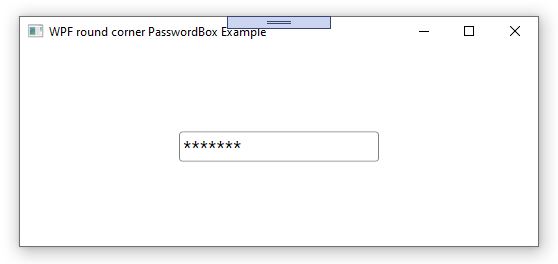

I copied you code and made some minor modifications, and it seems to work fine. Have you set the DataContext to your ConnectionViewModel object? You set the DisplayMemberPath and the SelectedValuePath to "Name", so I assume that you have a class PhoneBookEntry with a public property Name. Target.SetValue(DialogResultProperty, value) Public static void SetDialogResult(Window target, bool? value) Window.DialogResult = e.NewValue as bool? New PropertyMetadata(DialogResultChanged)) Public static readonly DependencyProperty DialogResultProperty = Here's the code for DialogCloser: using System.Windows Just put a bool? DialogResult property on your ViewModel and implement INotifyPropert圜hanged, and voilà, your ViewModel can close the Window (and set its DialogResult) just by setting a property. This is almost as clean as if the WPF team had gotten it right and made DialogResult a dependency property in the first place. No styles, no triggers instead, you can just do this: I was inspired by Thejuan's answer to write a simpler attached property. SetPassword(passwordBox, passwordBox.Password) Private static void PasswordChanged(object sender, RoutedEventArgs e) Private static void Attach(DependencyObject sender, PasswordBox.PasswordChanged += PasswordChanged PasswordBox.Password = (string)e.NewValue PasswordBox.PasswordChanged -= PasswordChanged PasswordBox passwordBox = sender as PasswordBox Private static void OnPasswordPropert圜hanged(DependencyObject sender, Private static void SetIsUpdating(DependencyObject dp, bool value) Return (bool)dp.GetValue(IsUpdatingProperty) Private static bool GetIsUpdating(DependencyObject dp) Public static void SetPassword(DependencyObject dp, string value) Return (string)dp.GetValue(PasswordProperty) Public static string GetPassword(DependencyObject dp) Return (bool)dp.GetValue(AttachProperty) Public static bool GetAttach(DependencyObject dp) Public static void SetAttach(DependencyObject dp, bool value) Private static readonly DependencyProperty IsUpdatingProperty =ĭependencyProperty.RegisterAttached("IsUpdating", typeof(bool), Typeof(bool), typeof(PasswordHelper), new PropertyMetadata(false, Attach)) Public static readonly DependencyProperty AttachProperty =ĭependencyProperty.RegisterAttached("Attach", New FrameworkPropertyMetadata(string.Empty, OnPasswordPropert圜hanged)) Public static readonly DependencyProperty PasswordProperty =ĭependencyProperty.RegisterAttached("Password", You can use attached properties to create a helper like this: public static class PasswordHelper Sc#1, 0.004391443, 0.002428215, 0.242281124įor the complete sample, see Styling with ControlTemplates Sample.Look at this blog post and see if it is helping you.Īpparently the link is dead now so here is the original solution (found here): The preceding example uses one or more of the following resources.
#Wpf passwordbox how to#
The following example shows how to define a ControlTemplate for the PasswordBox control. The Validation.HasError attached property is true has the control does not have focus. The Validation.HasError attached property is true has the control has focus. The control uses the Validation class and the Validation.HasError attached property is false. The mouse pointer is positioned over the control. The following table lists the visual states for the PasswordBox control. The text of the PasswordBox is displayed in this element. PartĪ visual element that can contain a FrameworkElement. The following table lists the named parts for the PasswordBox control. For more information, see Create a template for a control.

You can modify the default ControlTemplate to give the control a unique appearance. This topic describes the styles and templates for the PasswordBox control.


 0 kommentar(er)
0 kommentar(er)
